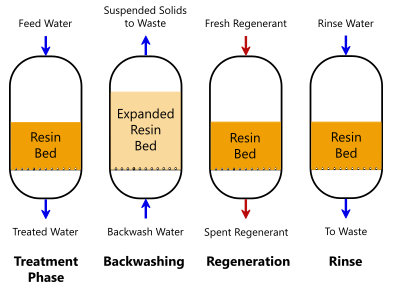Advanced Techniques for Effective PFAS Contamination Removal
The consistent challenge of PFAS contamination demands the expedition of innovative elimination approaches that can properly address these harmful compounds. Ingenious technologies, such as innovative oxidation processes and numerous adsorption techniques, have arised as appealing solutions in mitigating PFAS from affected environments.
Comprehending PFAS Features
Although per- and polyfluoroalkyl materials (PFAS) have actually been extensively made use of in various commercial and customer products as a result of their distinct properties, their perseverance in the atmosphere poses significant obstacles to public health and security. PFAS are a group of artificial chemicals characterized by a carbon-fluorine bond, one of the greatest chemical bonds recognized, which adds to their phenomenal stability and resistance to degradation. This security permits PFAS to gather in the environment and living microorganisms, causing potential unfavorable health and wellness effects.
These very same residential or commercial properties contribute to their ecological perseverance, as PFAS do not quickly break down via all-natural procedures. Understanding the chemical homes of PFAS is vital for creating reliable strategies to manage and mitigate their environmental effect.
Innovative Removal Technologies
The perseverance of PFAS in the setting has spurred the advancement of ingenious removal innovations targeted at efficiently getting rid of these contaminants from influenced communities. Amongst the most encouraging methods are sophisticated oxidation processes (AOPs), which use effective oxidants to damage down PFAS compounds right into much less damaging compounds. AOPs can be customized to target particular PFAS frameworks, improving their efficacy.
An additional arising technology is using adsorption media, such as triggered carbon and ion exchange materials, which can uniquely record PFAS from infected water. These products have actually shown considerable elimination efficiencies, although regular replacement and regrowth are required to maintain performance.
Membrane filtering strategies, including reverse osmosis and nanofiltration, are additionally acquiring traction in PFAS removal. These techniques can efficiently separate PFAS from water, providing a sensible service for dealing with polluted resources. Additionally, thermal therapy methods, such as incineration, can decay PFAS into safe byproducts, though they need mindful administration to control discharges.
Collectively, these ingenious remediation technologies stand for considerable advancements in the recurring battle against PFAS contamination, using various techniques to recover affected atmospheres and secure public wellness.

Bioremediation Methods
Bioremediation techniques supply an appealing method to dealing with PFAS contamination by using the all-natural capabilities of microbes to break down these persistent substances (m270 waste management). This technique involves the usage of germs, fungi, and various other microorganisms that can metabolize or transform PFAS materials right into less damaging by-products
Recent developments in molecular biology and environmental microbiology have enhanced our understanding of microbial areas and their possible roles in PFAS deterioration. Scientists are actively exploring specific strains of bacteria, such as Pseudomonas and Bacillus, which have shown the capability to break down particular PFAS compounds.
In situ bioremediation techniques, where bacteria are boosted straight in infected environments, can be especially reliable. This approach commonly entails the application of nutrients or electron donors to promote microbial development and task. click to find out more Additionally, ex lover situ techniques, such as bioreactors, permit for controlled problems that can maximize degradation rates.
In spite of the assurance of bioremediation, challenges stay, consisting of the intricate nature of PFAS substances and the need for substantial area testing - m270 waste management. Continued study and development will certainly be essential to improve these techniques and examine their effectiveness in diverse ecological contexts
Adsorption and Filtration Approaches
Resolving PFAS contamination frequently entails employing adsorption and filtration approaches, which are made to get rid of these consistent chemicals from water and dirt. Amongst the different strategies, triggered carbon adsorption is extensively made use of due to its high area and porosity, allowing effective trapping of PFAS particles. Granular activated carbon (GAC) systems are especially favored for dealing with large quantities of infected water, while powdered activated carbon (PAC) can be used for smaller-scale applications.
Ion exchange materials additionally reveal guarantee check it out in PFAS removal, operating by trading PFAS ions with less dangerous ions in the water. This technique has shown effectiveness in concentrating PFAS compounds, promoting their succeeding removal. In addition, membrane layer filtering techniques, such as reverse osmosis and nanofiltration, run by utilizing semi-permeable membrane layers to different PFAS from water, efficiently reducing their focus.
While these techniques work, they have to be very carefully selected based upon the particular PFAS substances present and the ecological context. Constant advancements in products science and design are resulting in the growth of unique adsorbents and filtration systems that boost removal efficiencies and lower functional costs, therefore enhancing total removal initiatives.
Regulatory and Policy Factors To Consider
How can efficient regulatory frameworks boost the management of PFAS contamination? Thorough policies are important to guarantee a worked with and durable reaction to the obstacles posed by per- and polyfluoroalkyl compounds (PFAS) Rules can develop clear guidelines for tracking, reporting, and remediating PFAS-contaminated websites, promoting liability among markets and public entities. (m270 waste management)

Furthermore, financial rewards and gives can be incorporated into plans to urge the adoption of advanced remediation modern technologies. Policymakers should also prioritize research study and growth, ensuring that emerging techniques for PFAS elimination are confirmed and executed successfully.
Moreover, public understanding and engagement are crucial elements of any kind of regulative technique, encouraging neighborhoods to advocate for their health and wellness and website here safety and security. Inevitably, a well-structured regulatory atmosphere will not just enhance the monitoring of PFAS contamination however additionally promote sustainable practices that safeguard future generations.
Conclusion
In summary, the complexity of PFAS contamination demands the fostering of sophisticated remediation methods. Continued study and advancement in this field remain critical to addressing the challenges postured by PFAS contamination.